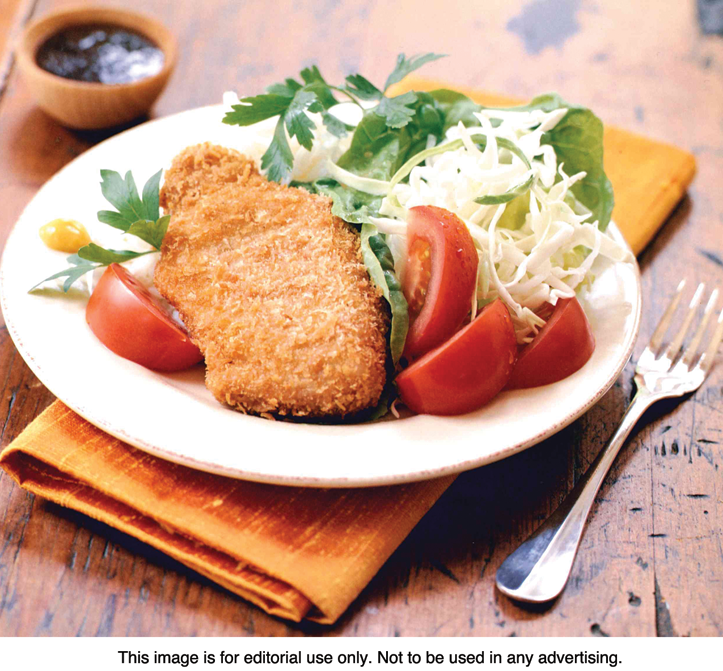Experimentation draws many people to cooking. Amateur cooks who are passionate about food can’t wait for the opportunity to prepare a meal that strays from the norm while testing their culinary skills.
Japanese cuisine is beloved the world over, but many non-Japanese people may be hesitant to prepare a favorite Japanese meal at home. Those who want to try can prepare the following recipe for “Tonkatsu (Crispy Fried Pork Cutlets)” courtesy of Amy Kaneko’s “Let’s Cook Japanese Food!” (Chronicle Books).
Tonkatsu
(Crispy Fried Pork Cutlets)
Serves 4
4 boneless pork loin chops,
each about 1/4 pound and
1/2- to 3/4-inch thick
Canola or another neutral
oil for deep-frying
1 to 2 cups all-purpose
flour
1 large egg
3 to 4 cups panko
(see note)
1 teaspoon salt
Tonkatsu sauce (see note)
Karashi (optional; see
note)
1/2 head green cabbage,
finely shredded
2 tomatoes, cored and
quartered
If your pork chops are on the thick side (3/4 inch), use a sharp knife to score one side lightly, making the cuts about 1 inch apart. This will ensure that thicker chops cook through.
Pour the oil to a depth of 3 inches into a wok or deep, wide saucepan and heat to 350 F on a deep-frying thermometer, or until a bit of panko dropped into the hot oil rises immediately to the top.
While the oil is heating, spread the flour in a small, shallow bowl. Break the egg into a second shallow bowl and beat with chopsticks or a fork until well blended. Spread 3 cups of the panko in a third shallow bowl. Sprinkle a little panko on a flat plate or tray.
To bread the cutlets, one at a time, sprinkle both sides of the cutlets with the salt. Dust them with the flour, shaking off the excess; coat with the egg; and then coat with the panko. Using your fingertips, lightly press the panko in place. As each cutlet is ready, place it on the prepared plate. As you work, add more panko to the bowl as needed.
When the oil is ready, add 1 or 2 breaded cutlets (it is imperative not to crowd the pan) and fry, turning often, until very crispy and medium-dark brown, about 6 minutes. Using tongs, transfer to a wire rack or paper towels to drain. Repeat until all the cutlets have been fried.
To serve, cut each chop crosswise into narrow strips and then reassemble the chops on 4 individual plates. Drizzle the tonkatsu sauce over the top and place a dab of karashi (if using) on the side. Serve the cabbage and tomatoes alongside.
Panko: Also called Japanese bread crumbs or honey-wheat bread crumbs, these light-colored, nearly flat “shards” of flaked wheat flour are used for many deep-fried dishes like Tonkatsu. Panko is readily available in plastic bags in the Asian or international foods section of regular markets.
Tonkatsu sauce: Also called fruit sauce, this thick, slightly sweet, spiced sauce is indispensable in the modern Japanese kitchen. Bull Dog is a famous Japanese brand, but Kikkoman is the most widely available brand outside of Japan. This sauce keeps in the refrigerator for a long time after opening.
Karashi: Japanese brands of Chinese-style hot yellow mustard powder, or karashi, are hard to find outside of Asian markets. But Chinese brands, which are more common, will do. This condiment is served in a little dab for mixing with Tonkatsu sauce for accompanying Tonkatsu. It’s pretty hot, so taste it before you start mixing it in. Most brands are mixed in a ratio of 2 teaspoons mustard powder to 1 tablespoon water. Check the package for directions.



